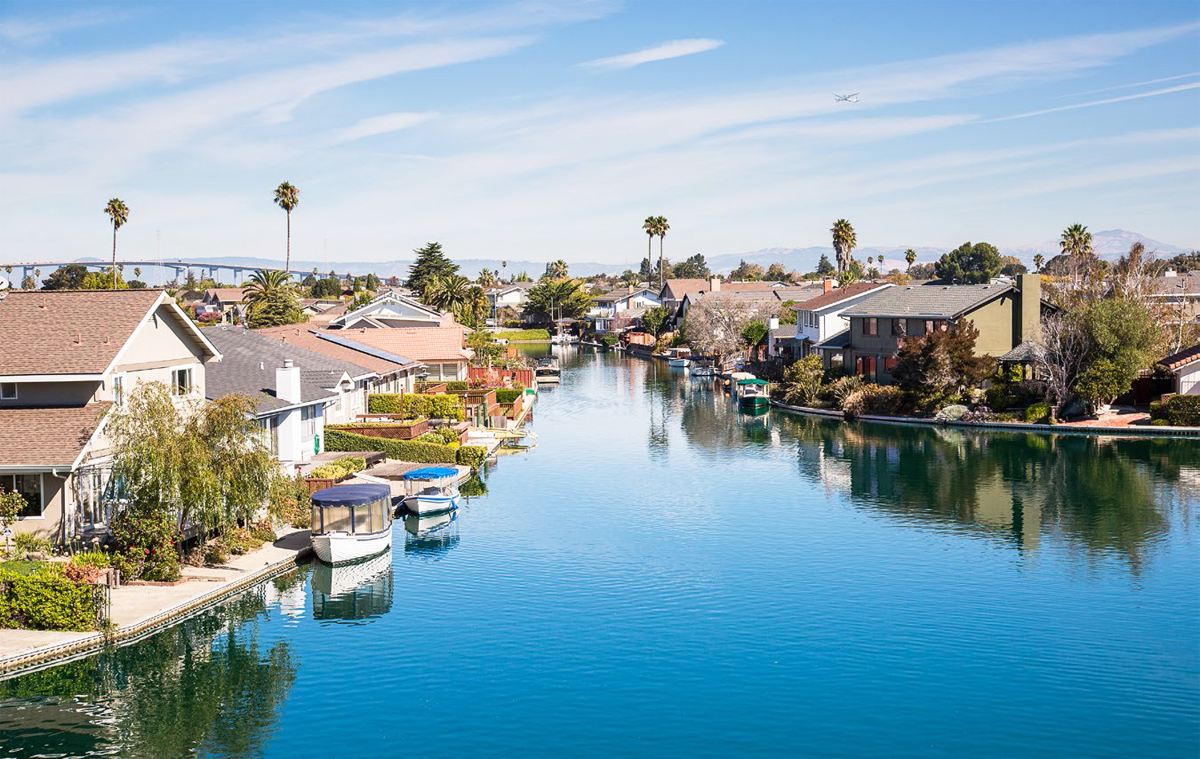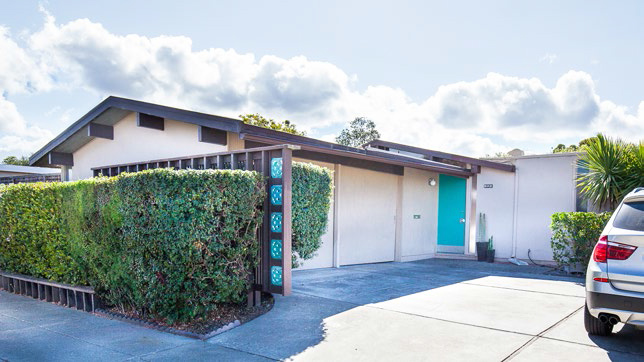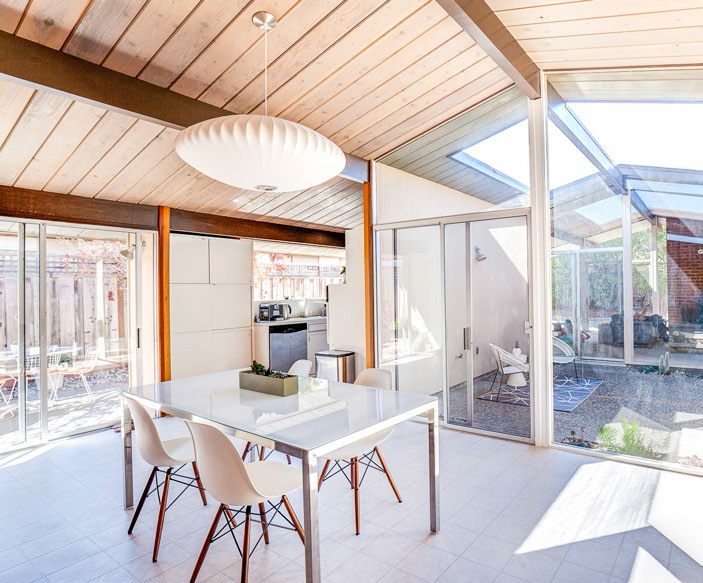Forgotten by the Bay
 |
|
|
 |
|
|
 |
 |
|
|
|
|
|
|
It was to be a paradise on the bay, with homes arrayed on curving streets and along lagoons, all within easy walking distance of shops and restaurants, schools, and parks.
Its developers loved the proposed community so much they named it after the patriarch of their family-owned firm, T. Jack Foster, Sr. They bragged that it was "America's first completely pre-planned, self-sufficient city."
And when they thought about the houses that would go into their town, Foster City, one name sprang to mind.
"Eichler Homes was the builder that I wanted the most," T. Jack Foster, Jr. wrote in a history of the city. "I had tremendous admiration for their wonderfully architectural home."
Today the 200-plus Eichler homes of Foster City make up one of the most unusual groupings in Joe Eichler's repertoire.
The homes were built from 1963 to 1968 and are among the first built in the brand-new town.
Eichler homes are dispersed through three neighborhoods—Neighborhood One, with streets named after ships; Neighborhood Two, with streets named for birds; and Neighborhood Four, with nautical names.
"There will be Eichlers on one block, then three blocks away there will be four Eichlers, and then a few blocks away there will be 30," says Glenn Sennett, a Coldwell Banker realtor who handles Eichlers there.
Because they are dispersed, you don't find in Foster City that 'we're all Eichler owners and we stick together' mentality that fosters solidarity and modern-themed parties in so many Eichler neighborhoods.
Still, there are a few mini-Eichler neighborhoods. One section of Mainsail Court, for example, is all Eichlers, with homes connecting via pedestrian paths to Ketch Park. Some of these 1968 homes still retain their Tiki-like outrigger central beam-ends.
Over the years many Foster City Eichler homes have suffered wrongheaded remodels. But a remarkable number are essentially intact, and others are being restored by enthusiasts of the style.
There are some unusual models too, including some with covered 'galleries' instead of atriums. Models are by Claude Oakland with some by Eichler's in-house architect, John Brooks Boyd. Eichler's brochure indicates the homes were "specially designed for the area."
One unusual model, with a peculiar front door that, rather than being rectangular, has a sloped top, is unusual also for the placement of its atrium. Rather than serving as a sort of entry court, this atrium is surrounded on all sides by interior space. "It's pretty great," says Rachel Cross, who owns this model with her husband, Paul, on Lurline Drive. "It's like a fish bowl."
Unlike the case in most Eichler neighborhoods, some of the salient features of the Eichlers in Foster City are due not to Joe himself but to the developers of the city.
"Never before had [Eichler] been part of someone else's development and required to build their contemporary one-story houses in and around conventional-looking homes," T. Jack Foster, Jr. wrote in his book, The Development of Foster City.




